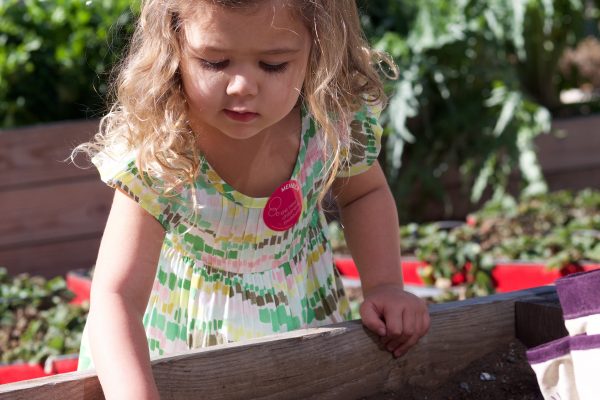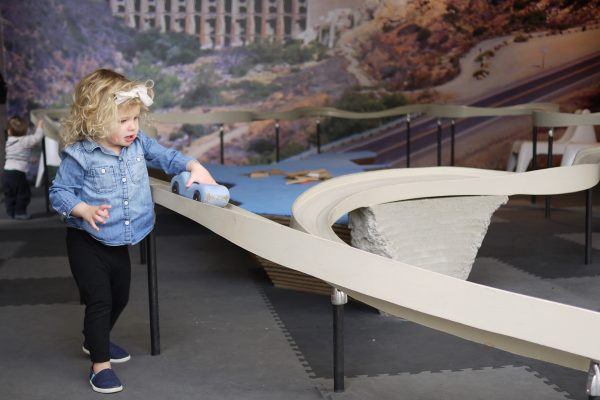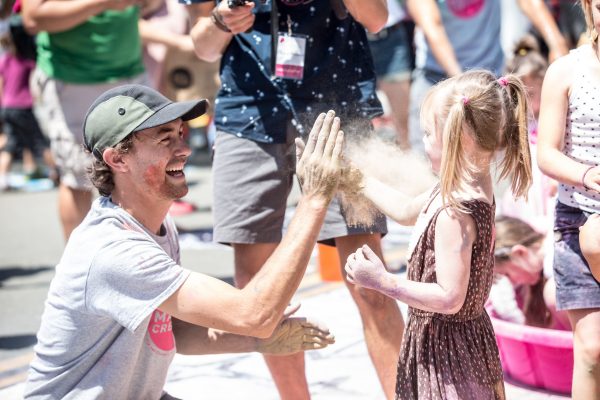As part of our ScholarShare 529 Toddler Time at Home program, we’re making pumpkins out of paper bags with our little ones! Celebrate the fall season with this simple art activity and decorate the home with your uniquely-designed paper bag pumpkins! Plus, it’s a great way to recycle paper grocery bags piling up at home!
directions
1. Choose your bag! Then work with your little one to rip the newspaper in large strips and “crunch” it up. Place the crunched-up newspaper in your bag until you have filled it about three quarters of the way full. Have fun stuffing your pumpkins together!
2. Next, twist the top of the stuffed bag to create a stem and tie it off with a rubber band. Encourage your little one to work with you in all of these steps, if possible.
3. Set up your area for painting. Use additional newspaper or a tablecloth you don’t mind getting messy to cover your painting area. Paint your pumpkins together. Leave them out to dry.
4. After your paper bag pumpkins are dry, take a pipe cleaner and twist one end of it around the pumpkin stem. Then, use a marker or pen to wrap the pipe cleaner around it multiple times. Your little one will enjoy doing this with you. Finally, remove the pen or marker, and you’ll be left with a curly stem!
tips
- Remind your little one that pumpkins come in different sizes, colors and shapes. Let them create their own unique pumpkins!
- If you do not have Tempera paints at home, you can use markers or crayons to color your pumpkins before or after stuffing them. Little ones love rubbing colors, so consider coloring your pumpkins using the side of a crayon with the paper removed.
- Why not mix colors to create new ones? Pumpkins often have more than one color in them, and little ones will enjoy blending colors.
Toddler to transitional kindergarten learning connections
Early learners (ages 2 – 5) enjoy painting and sculpting, activities that allow them to get creative, physical and messy all at the same time. These activities are also a way for early learners to use their powers of observation, to explore color and process and to test outcomes. To further increase the learning opportunities while making paper bag pumpkins together, consider incorporating one or more of the ideas below.
Happy Halloween
If celebrating Halloween is part of your family tradition, you may want to create a jack-o-lantern from one or all of your finished paper bag pumpkins. Using a black marker (or paint), work with your little one to add faces and other shapes to your finished pumpkins. Create smiley, silly or even spooky versions of them to ring in the Halloween season!
Color Mixing
It’s never too early to teach your early learner about color and how colors are made. Talking about colors, pointing them out in their environment, using color names and exploring together with art materials on what happens when colors are combined are all great ways to introduce simple color theory to your early learner. If able, encourage them to point out the discoveries they are making.
Share a Story!
Reading is a wonderful vehicle for learning and for introducing new ideas to early learners. Select any engaging and age-appropriate books that explore pumpkins. Read them together with your child before or after the paper bag pumpkin activity.
Recommended Related Reading (Ages 2 – 5):
- The Biggest Pumpkin Ever by Steven Kroll and illustrated by Jeni Bassett
- Pete the Cat: Five Little Pumpkins by James Dean and Kimberly Dean
- The Ugly Pumpkin by Dave Horowitz
Preschool Learning Foundations Standards (Visual Arts and Social Emotional Learning)
Age 48 months:
- Create marks with crayons, paint and chalk and then identify them; mold and build with dough and clay and then identify them.
- Begin to recognize and name materials and tools used for visual arts.
- Enjoy learning and are confident in their abilities to make new discoveries although may not persist at solving difficult problems.
Age 60 months:
- Begin to plan art and show increasing interest and persistence in completing it.
- Recognize and name materials and tools used for visual arts.



